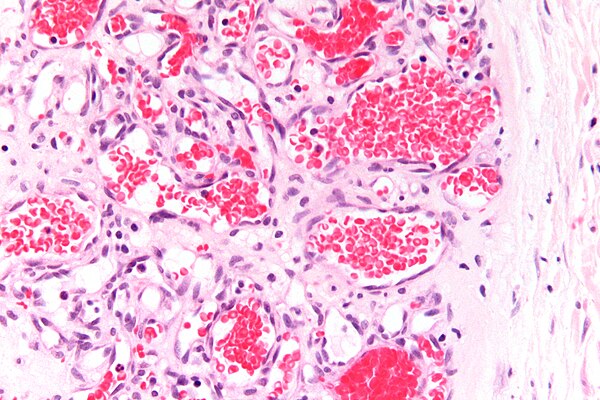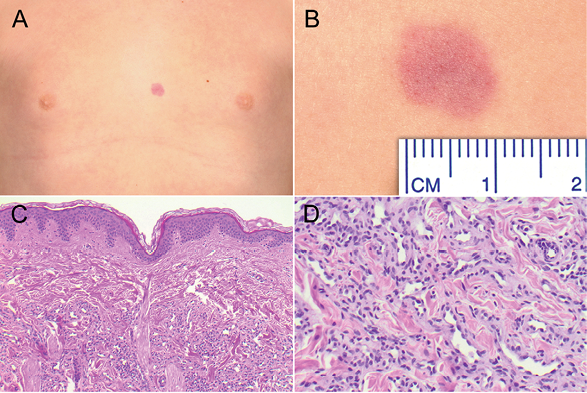Hemangiomas, often abbreviated as HMs, are one of the most common types of benign vascular tumors. These growths consist of an abnormal collection of blood vessels that can occur on the skin or within internal organs. While they are generally harmless, understanding their causes, types, and treatment options is essential for managing them effectively. This guide provides a comprehensive overview of hemangiomas, shedding light on what they are, how they form, and the available treatment strategies.

What Are Hemangiomas?
Hemangiomas are non-cancerous growths made up of an overgrowth of blood vessels. They can appear anywhere on or inside the body but are most commonly found on the skin. These growths can vary in size, shape, and color, depending on their location and type. While some hemangiomas are present at birth, others develop shortly after birth and may grow rapidly during the first few months of life.
Although hemangiomas are typically not harmful, they can sometimes cause complications if they interfere with vital functions such as breathing, vision, or eating. In rare cases, they may also ulcerate or bleed, leading to discomfort or infection.
Causes of Hemangiomas
The exact cause of hemangiomas remains unclear, but researchers believe that both genetic and environmental factors play a role in their development. Below are some potential factors that contribute to the formation of hemangiomas:
Genetic Factors
- Some studies suggest that certain genetic mutations may predispose individuals to developing hemangiomas.
- Familial cases of hemangiomas have been reported, indicating a possible hereditary component.
Hormonal Influences
- Hormones such as estrogen may influence the growth of hemangiomas, which could explain why they are more common in female infants than in males.
- Pregnancy-related hormonal changes might also play a role in the development of these growths.
Vascular Abnormalities
- Hemangiomas are thought to arise from abnormalities in the development of blood vessels during fetal growth.
- Disruptions in the signaling pathways that regulate blood vessel formation may contribute to their occurrence.
Types of Hemangiomas
Hemangiomas can be classified based on their appearance, location, and behavior. Understanding the different types is crucial for determining the appropriate treatment approach.
Infantile Hemangiomas
Infantile hemangiomas are the most common type and typically appear within the first few weeks after birth. They go through three distinct phases:
- Proliferative Phase: During this phase, the hemangioma grows rapidly, often doubling in size within weeks.
- Stable Phase: Growth slows down, and the hemangioma reaches its maximum size.
- Involution Phase: Over time, the hemangioma begins to shrink and fade, often leaving behind minimal scarring.
Congenital Hemangiomas
Congenital hemangiomas are present at birth and differ from infantile hemangiomas in that they do not undergo a rapid growth phase. There are two subtypes:
- Rapidly Involuting Congenital Hemangiomas (RICH): These hemangiomas begin to shrink soon after birth and typically disappear by the time the child is one year old.
- Non-Involuting Congenital Hemangiomas (NICH): Unlike RICH, these hemangiomas do not shrink and may require surgical removal if they cause problems.
Internal Hemangiomas
While most hemangiomas occur on the skin, some develop internally within organs such as the liver, brain, or gastrointestinal tract. Internal hemangiomas can pose serious health risks if they interfere with organ function or cause bleeding.
Liver Hemangiomas
Liver hemangiomas are the most common type of internal hemangioma. They are usually asymptomatic and discovered incidentally during imaging tests for other conditions. However, large liver hemangiomas may cause abdominal pain or discomfort.
Brain Hemangiomas
Hemangiomas in the brain, also known as cavernous malformations, can lead to seizures, headaches, or neurological deficits if they bleed or press on surrounding tissues.
Symptoms of Hemangiomas
The symptoms of hemangiomas depend on their size, location, and type. Some common signs include:
- A red or purple raised spot on the skin, often resembling a strawberry.
- Swelling or a lump under the skin.
- Pain or discomfort if the hemangioma ulcerates or becomes inflamed.
- Breathing difficulties if the hemangioma is located in the airway.
- Vision problems if the hemangioma affects the eyes or surrounding areas.
Diagnosis of Hemangiomas
Diagnosing hemangiomas typically involves a physical examination and a review of the patient’s medical history. In some cases, additional tests may be required to confirm the diagnosis or assess the extent of the hemangioma:
- Ultrasound: This imaging test is often used to evaluate hemangiomas in infants and determine their depth and size.
- Magnetic Resonance Imaging (MRI): MRI scans provide detailed images of internal hemangiomas and help identify any complications.
- Biopsy: In rare cases, a small tissue sample may be taken to rule out other conditions.
Treatment Options for Hemangiomas
Not all hemangiomas require treatment. Many infantile hemangiomas resolve on their own without intervention. However, treatment may be necessary if the hemangioma causes functional problems, cosmetic concerns, or complications. Below are some common treatment options:
Observation
For small, asymptomatic hemangiomas, regular monitoring may be the best course of action. Parents and caregivers are advised to watch for changes in size, color, or symptoms.
Medications
In cases where hemangiomas grow rapidly or cause complications, medications may be prescribed to slow their growth or shrink them:
- Beta-Blockers: Oral or topical beta-blockers, such as propranolol, are commonly used to treat infantile hemangiomas. These medications work by constricting blood vessels and reducing blood flow to the hemangioma.
- Corticosteroids: Steroids may be used to reduce inflammation and slow the growth of hemangiomas, although they are less commonly prescribed today due to potential side effects.
Laser Therapy
Laser treatments are effective for superficial hemangiomas that affect the skin. The laser targets the blood vessels within the hemangioma, causing them to collapse and fade over time. Laser therapy is particularly useful for treating hemangiomas on the face or other visible areas.
Surgical Removal
Surgery may be recommended for large or problematic hemangiomas that do not respond to other treatments. Surgical removal is also an option for internal hemangiomas that pose a risk to organ function.
Embolization
For internal hemangiomas, embolization may be performed to block the blood supply to the growth. This minimally invasive procedure involves injecting a substance into the blood vessels feeding the hemangioma, causing it to shrink.
Living with Hemangiomas
While many hemangiomas resolve on their own, living with a persistent or complicated hemangioma can be challenging. Parents and patients should work closely with healthcare providers to monitor the condition and address any concerns. Support groups and counseling can also provide emotional support and practical advice for managing the psychological impact of visible hemangiomas.
Prevention of Hemangiomas
Since the exact cause of hemangiomas is unknown, there is no guaranteed way to prevent them. However, maintaining a healthy pregnancy and avoiding known risk factors, such as smoking or exposure to harmful substances, may reduce the likelihood of complications.
When to Seek Medical Attention
It is important to consult a healthcare provider if you notice any unusual growths or symptoms associated with hemangiomas. Seek immediate medical attention if the hemangioma:
- Bleeds heavily or does not stop bleeding.
- Shows signs of infection, such as redness, warmth, or pus.
- Interferes with breathing, vision, or other vital functions.





